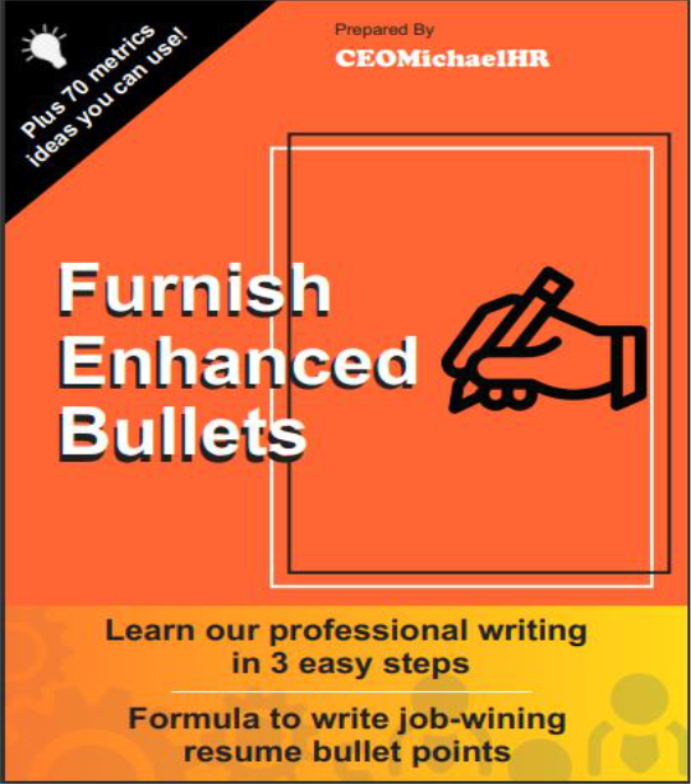
New clients, unlock 10% off all plans 🔥 at checkout with code: CEO10SPECIAL (Limited Time Offer)
New clients, unlock 10% off all plans 🔥 at checkout with code: CEO10SPECIAL (Limited Time Offer)






If you’re a freelancer or independent contractor, you know how important it is to have a strong resume that showcases your skills and experience.
Your resume is often the first impression potential clients or employers have of you, so it’s crucial to make it stand out.
In this article, we’ll cover the essential tips and tricks for creating a professional and effective resume as a freelancer. We’ll cover topics like what format and design to use, whether to use the term “Freelancer” or “Independent Contractor,” where to list your projects, and whether to include an objective statement.
We’ll also discuss how to go beyond the traditional resume and showcase your skills and experience in other ways.
Whether you’re a seasoned freelancer or just starting, this post will provide you with the necessary tools and insights to create a standout resume that will help you land your next project.
So let’s get started!
Your resume format and design can make a significant difference in how you present yourself to potential clients.
When it comes to the format, you have several options, including chronological, functional, and combination formats.
The chronological format is the most commonly used format and is suitable for freelancers with a clear work history. This format lists your work experience in reverse chronological order, starting with your most recent position.
The functional format is suitable for freelancers with a diverse skill set who want to highlight their skills and achievements instead of their work history. This format emphasizes your skills and abilities rather than your work experience.
The combination format is a mix of the chronological and functional formats. This format emphasizes both your skills and work experience and is suitable for freelancers with a diverse skill set and a clear work history.
When it comes to the design, keep it simple and professional.
Choose a font that is easy to read, such as Arial, Calibri, or Times New Roman, and use a font size between 10 and 12 points.
Use bullet points to break up large blocks of text, and leave plenty of white space to make your resume easy to scan.
Avoid using too many colors, graphics, or images, as they can distract from your content and make your resume look unprofessional. Instead, use bold or italic font to emphasize important information, such as job titles or key achievements.
In summary, choose a format that suits your work history and skill set and keep your design simple, professional, and easy to read.
Remember that your resume should showcase your skills and experience and make a strong first impression on potential clients.
As a freelancer, one of the key decisions you’ll have to make when crafting your resume is what title to use.
While the terms “Freelancer” and “Independent Contractor” are often used interchangeably, there are some important distinctions to consider.
First, it’s important to understand the differences between the two terms. Generally speaking, a freelancer is someone who works on a project-by-project basis for multiple clients, while an independent contractor is someone who works for a single client for an extended period of time.
When it comes to choosing a title for your resume, there are a few factors to consider. Here are some tips to help you decide:
Consider your industry: In some industries, one term may be more commonly used than the other. Do some research to see what terminology is most appropriate for your field.
Think about your work history: If you’ve worked primarily on a project-by-project basis for multiple clients, “Freelancer” may be the more appropriate title for your resume. If you’ve worked primarily for a single client for an extended period of time, “Independent Contractor” may be a better fit.
Be consistent: Whichever term you choose, make sure you use it consistently throughout your resume and other job application materials.
Ultimately, the most important thing is to choose a title that accurately reflects your work history and is appropriate for your industry.
Don’t get too caught up in the semantics – what matters most is that your resume effectively communicates your skills and experience to potential clients and employers.
Find out: How Do I List Self-Employment & Freelance Work on Resume?
As a freelancer, your projects and work experience are your most valuable assets, and it’s essential to showcase them effectively on your resume.
But where should you list your projects?
Here are some tips to help you organize and present your projects in the best way possible:
Listing your projects in chronological order
One common way to list your projects is to organize them in reverse chronological order, with your most recent projects listed first.
This approach can help demonstrate your most current skills and expertise and show that you’re continuously working and improving as a freelancer.
Categorizing your projects by type or industry
If you’ve worked on projects in different industries or with different types of clients, you may want to consider categorizing them by type or industry.
Incorporating this method can help emphasize your versatility and expertise in different areas, and make it easier for potential clients or employers to see how your skills and experience match their specific needs.
Highlighting your most relevant and impressive projects
While it’s important to include all your projects on your resume, it’s also crucial to highlight your most relevant and impressive ones.
For example, if you’re applying for a project that involves web design, you may want to highlight your most significant web design projects and describe how you approached the project and what results you achieved.
Generally, the key is to present your projects in a clear and concise manner, focusing on the skills and experience that are most relevant to the job or project you’re applying for.
Through highlighting your best work and demonstrating your expertise, you can increase your chances of landing your next freelance gig.
Find out: How to Write a Resume Outline that Can Simplify the Resume Creation Process
When it comes to writing a freelance resume, some people wonder whether they should include an objective statement.
An objective statement is a brief statement at the top of your resume that outlines your career goals and the type of job you’re seeking.
While objective statements used to be a standard part of most resumes, their use has become less common in recent years. This is partly due to the fact that most employers already know what job you’re applying for based on the position title and your relevant experience.
That being said, including an objective statement can still be beneficial in some cases. For example, if you’re transitioning to a new industry or career path, or if you’re looking for freelance work in a highly specialized field, an objective statement can help to clarify your goals and highlight your relevant skills.
If you do choose to include an objective statement, keep it short and to the point. Avoid generic statements like “Looking for a challenging position in a fast-paced environment,” and instead focus on your specific career goals and what you can bring to the table.
Ultimately, whether or not to include an objective statement in your freelance resume is a personal choice.
If you feel that it adds value and helps to showcase your skills and experience, go ahead and include one. If not, feel free to skip it and focus on other parts of your resume that are more relevant to your freelance career.
Find out: Resume Help: Are You a Doer or Achiever?
As a freelancer, your resume is an important tool for landing new clients and projects.
However, it’s important to recognize that a traditional resume has its limitations, and it may not always be enough to showcase your skills and experience effectively.
That’s why it’s essential to go beyond the resume and explore other ways to showcase your work.
One way to do this is by building a strong online presence. This can include creating a personal website or blog where you can showcase your work and share your expertise.
You can also use social media platforms like LinkedIn or Twitter to connect with potential clients and industry professionals.
Another effective way to showcase your skills and experience is by building a portfolio. Your portfolio should include samples of your best work, along with descriptions and explanations of your process and the results you achieved.
This can be a powerful tool for demonstrating your capabilities to potential clients.
Additionally, consider taking on side projects or volunteer work that aligns with your professional goals. This can provide you with valuable experience and exposure, as well as the opportunity to build relationships with potential clients or collaborators.
Never forget that as a freelancer, your resume is just one tool in your arsenal. By going beyond the resume and exploring other ways to showcase your skills and experience, you can set yourself apart from the competition and position yourself as a top candidate for your next project or client.
Congratulations! You now have a better understanding of how to create a winning resume as a freelancer.
By following the tips outlined in this article, you can create a professional-looking resume that highlights your skills and experience, and helps you stand out from the competition.
However, keep in mind that a resume is just one piece of the puzzle. As a freelancer, it’s important to have a strong online presence and portfolio that showcases your work and highlights your strengths.
Don’t be afraid to get creative and experiment with different ways to promote yourself and your services.
At CEOMichaelHR, we understand the unique challenges that freelancers face when it comes to crafting a winning resume. Our team of expert writers has years of experience working with freelancers and can help you create a customized resume that highlights your strengths and gets you noticed by potential clients. Collaborate with us today to take your freelance career to the next level.
Share
Further Reading
*The names and logos of the companies referred to in this page are all trademarks of their respective holders. Unless specifically stated otherwise, such references are not intended to imply any affiliation or association with CEOMichaelHR.
Land interviews 3x faster while submitting fewer resumes
Copyright © 2025, ceomichaelhr.com.
All rights reserved.
Land interviews 3x faster while submitting fewer resumes
Copyright © 2025, ceomichaelhr.com.
All rights reserved.

Learn the same techniques our expert resume writers have used to get thousands of clients closer to their next job
Unlock expert resume tips, start landing multiple interviews!

Stay connected to receive powerful career insights, updates, and inspiration that’ll help you hit your career goals.